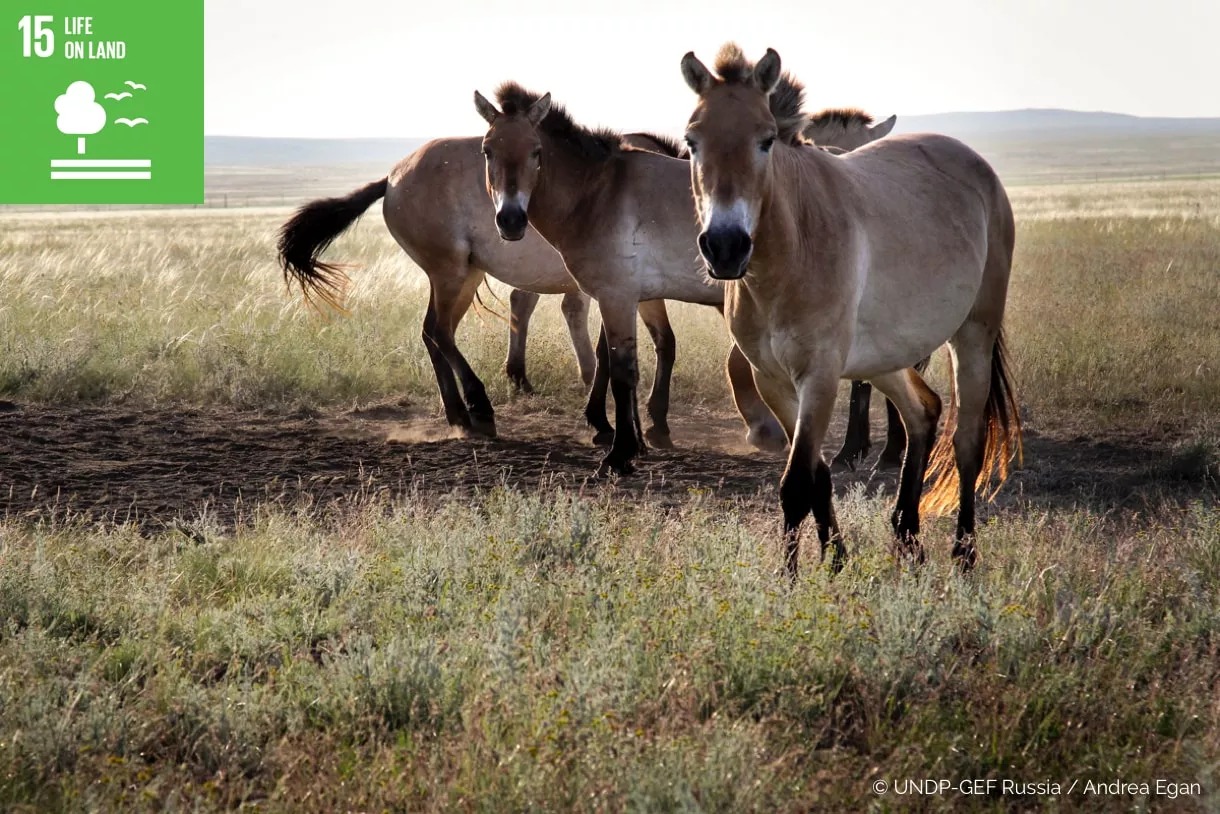Forests cover 30.7 per cent of the Earth’s surface and, in addition to providing food security and shelter, they are key to combating climate change, protecting biodiversity and the homes of the indigenous population. By protecting forests, we will also be able to strengthen natural resource management and increase land productivity.
At the current time, thirteen million hectares of forests are being lost every year while the persistent degradation of drylands has led to the desertification of 3.6 billion hectares. Even though up to 15% of land is currently under protection, biodiversity is still at risk. Deforestation and desertification – caused by human activities and climate change – pose major challenges to sustainable development and have affected the lives and livelihoods of millions of people in the fight against poverty.
Efforts are being made to manage forests and combat desertification. There are two international agreements being implemented currently that promote the use of resources in an equitable way. Financial investments in support of biodiversity are also being provided.
The Lion’s Share Fund
On 21 June, 2018, the United Nations Development Programme (UNDP), FINCH and founding partner Mars, Incorporated, announced the Lion’s Share, an initiative aimed at transforming the lives of animals across the world by asking advertisers to contribute a percentage of their media spend to conservation and animal welfare projects. The Lion’s Share will see partners contribute 0.5 percent of their media spend to the fund for each advertisement they use featuring an animal. Those funds will be used to support animals and their habitats around the world. The Fund is seeking to raise US$100m a year within three years, with the money being invested in a range of wildlife conservation and animal welfare programs to be implemented by United Nations and civil society organizations.
Human life depends on the earth as much as the ocean for our sustenance and livelihoods. Plant life provides 80 percent of our human diet, and we rely on agriculture as an important economic resource and means of development. Forests account for 30 percent of the Earth’s surface, providing vital habitats for millions of species and important sources for clean air and water; as well as being crucial for combating climate change.
Today we are seeing unprecedented land degradation, and the loss of arable land at 30 to 35 times the historical rate. Drought and desertification is also on the rise each year, amounting to the loss of 12 million hectares and affects poor communities globally. Of the 8,300 animal breeds known, 8 percent are extinct and 22 percent are at risk of extinction.
The SDGs aim to conserve and restore the use of terrestrial ecosystems such as forests, wetlands, drylands and mountains by 2020. Halting deforestation is also vital to mitigating the impact of climate change. Urgent action must be taken to reduce the loss of natural habitats and biodiversity which are part of our common heritage.
View Goal Target
- By 2020, ensure the conservation, restoration and sustainable use of terrestrial and inland freshwater ecosystems and their services, in particular forests, wetlands, mountains and drylands, in line with obligations under international agreements
- By 2020, promote the implementation of sustainable management of all types of forests, halt deforestation, restore degraded forests and substantially increase afforestation and reforestation globally
- By 2030, combat desertification, restore degraded land and soil, including land affected by desertification, drought and floods, and strive to achieve a land degradation-neutral world
- By 2030, ensure the conservation of mountain ecosystems, including their biodiversity, in order to enhance their capacity to provide benefits that are essential for sustainable development
- Take urgent and significant action to reduce the degradation of natural habitats, halt the loss of biodiversity and, by 2020, protect and prevent the extinction of threatened species
- Promote fair and equitable sharing of the benefits arising from the utilization of genetic resources and promote appropriate access to such resources, as internationally agreed
- Take urgent action to end poaching and trafficking of protected species of flora and fauna and address both demand and supply of illegal wildlife products
- By 2020, introduce measures to prevent the introduction and significantly reduce the impact of invasive alien species on land and water ecosystems and control or eradicate the priority species
- By 2020, integrate ecosystem and biodiversity values into national and local planning, development processes, poverty reduction strategies and accounts
- Mobilize and significantly increase financial resources from all sources to conserve and sustainably use biodiversity and ecosystems
- Mobilize significant resources from all sources and at all levels to finance sustainable forest management and provide adequate incentives to developing countries to advance such management, including for conservation and reforestation
- Enhance global support for efforts to combat poaching and trafficking of protected species, including by increasing the capacity of local communities to pursue sustainable livelihood opportunities
Facts & Figure
Forests
- Around 1.6 billion people depend on forests for their livelihood, including 70 million indigenous people.
- Forests are home to more than 80 per cent of all terrestrial species of animals, plants and insects.
- Between 2010 and 2015, the world lost 3.3 million hectares of forest areas. Poor rural women depend on common pool resources and are especially affected by their depletion.
Desertification
- 2.6 billion people depend directly on agriculture, but 52 per cent of the land used for agriculture is moderately or severely affected by soil degradation.
- Arable land loss is estimated at 30 to 35 times the historical rate
- Due to drought and desertification, 12 million hectares are lost each year (23 hectares per minute). Within one year, 20 million tons of grain could have been grown.
- 74 per cent of the poor are directly affected by land degradation globally.
Biodiversity
- Illicit poaching and trafficking of wildlife continues to thwart conservation efforts, with nearly 7,000 species of animals and plants reported in illegal trade involving 120 countries.
- Of the 8,300 animal breeds known, 8 per cent are extinct and 22 per cent are at risk of extinction.
- Of the over 80,000 tree species, less than 1 per cent have been studied for potential use.
- Fish provide 20 per cent of animal protein to about 3 billion people. Only ten species provide about 30 per cent of marine capture fisheries and ten species provide about 50 per cent of aquaculture production.
- Over 80 per cent of the human diet is provided by plants. Only three cereal crops – rice, maize and wheat – provide 60 per cent of energy intake.
- As many as 80 per cent of people living in rural areas in developing countries rely on traditional plant-‐based medicines for basic healthcare.
- Micro-organisms and invertebrates are key to ecosystem services, but their contributions are still poorly known and rarely acknowledged.


